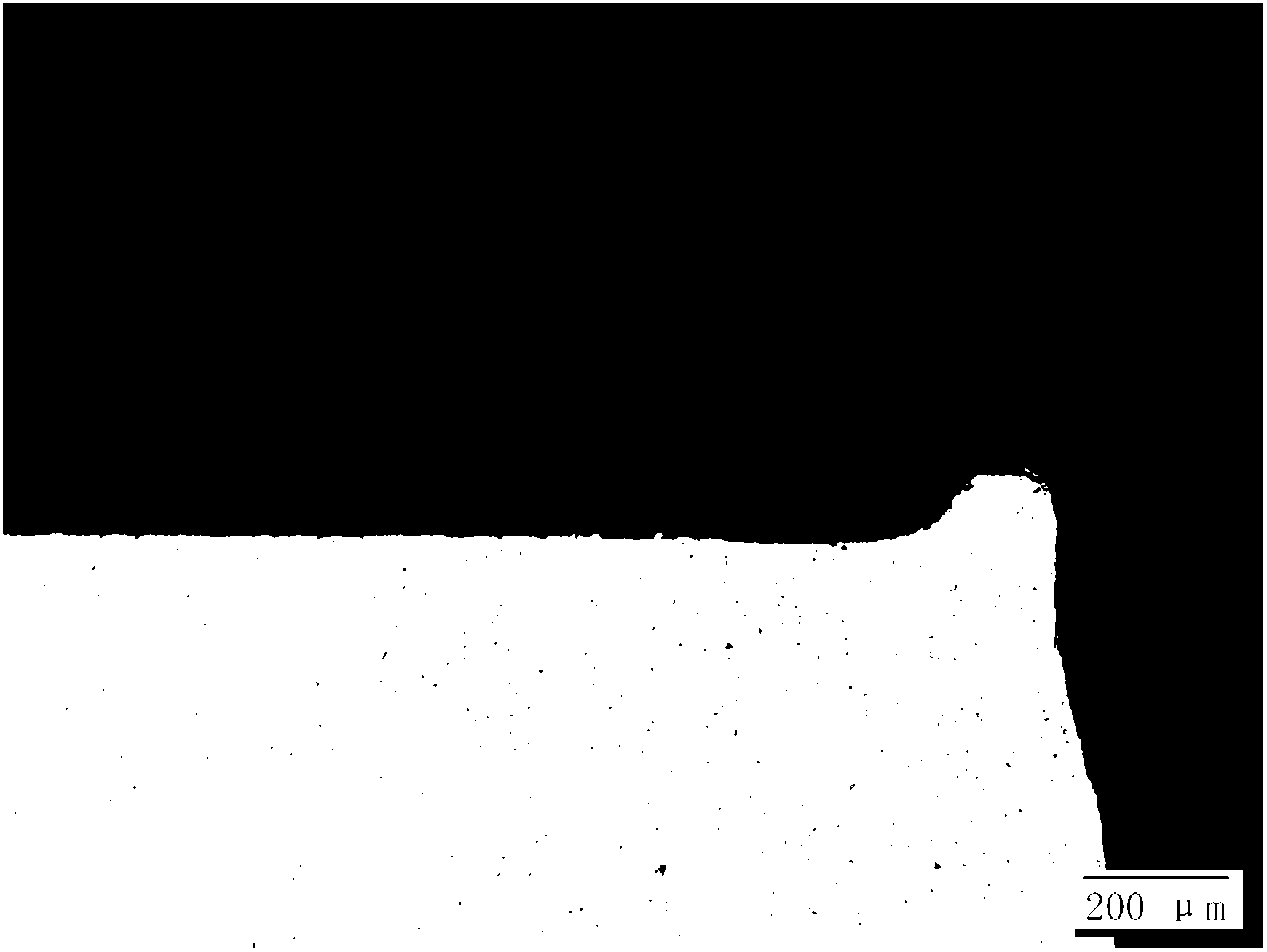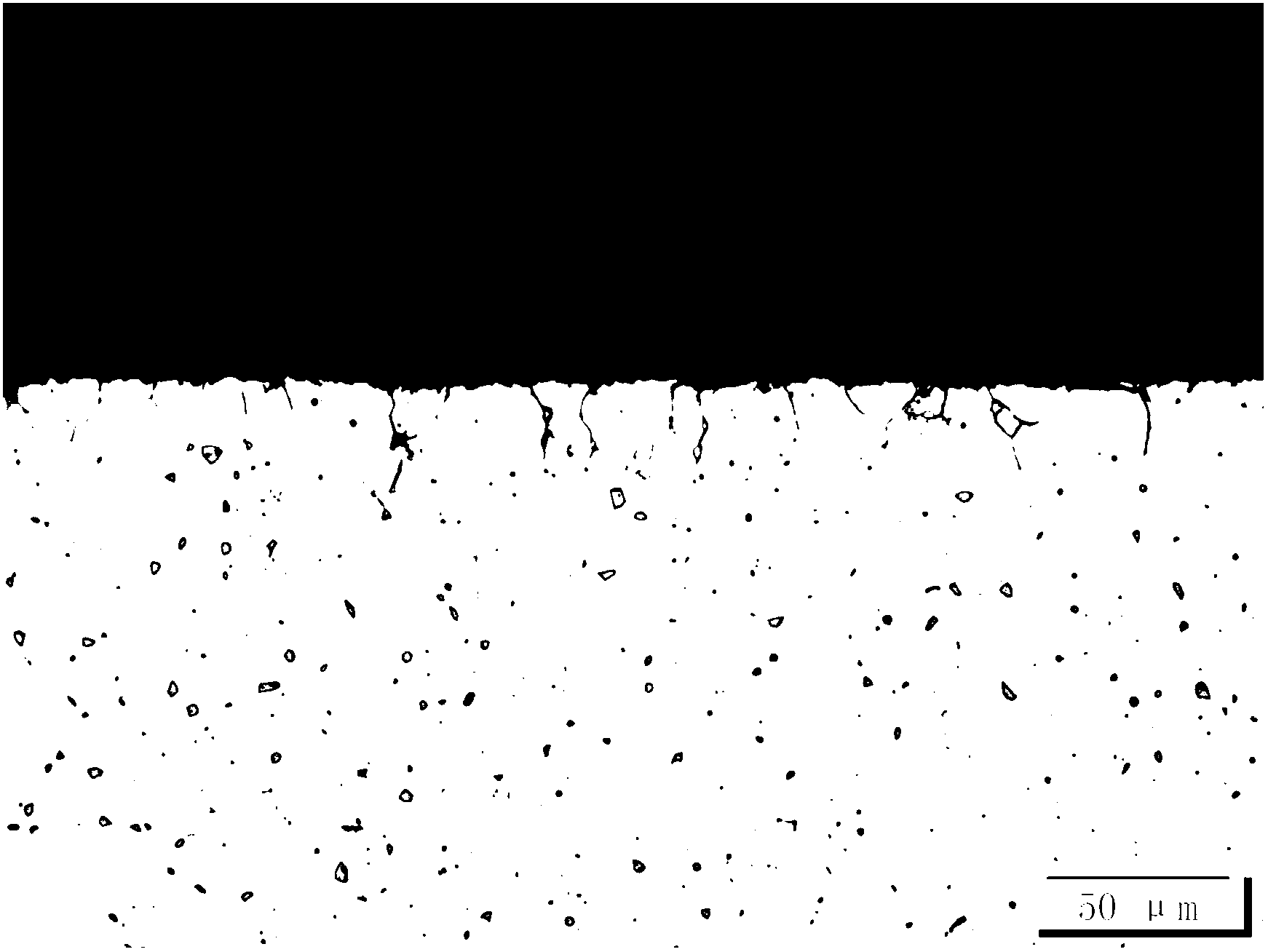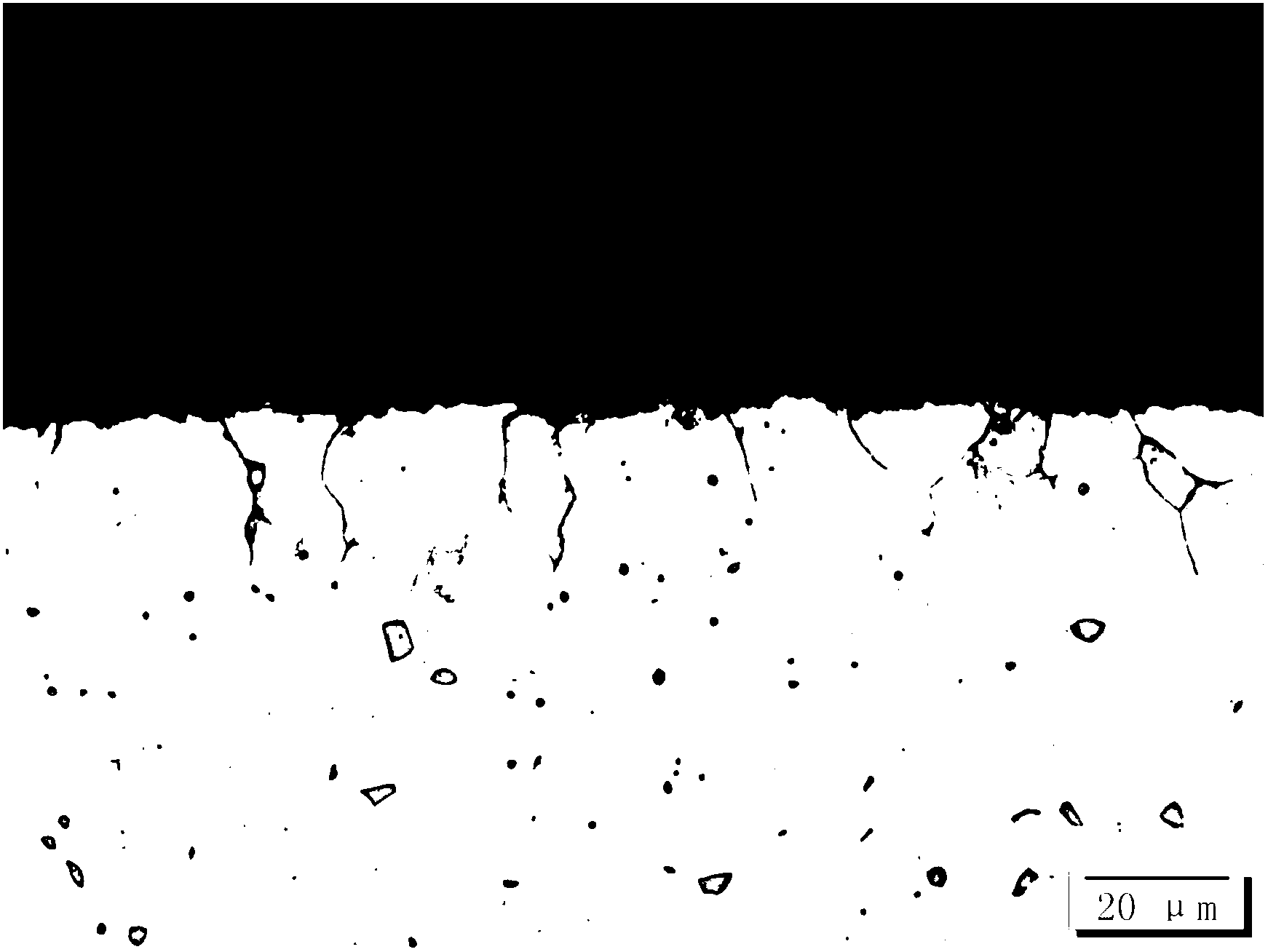Brass dezincification-resistance sample preparation method
A technology for sample preparation and resistance to dezincification, applied in the preparation of test samples, etc., can solve the problems of chamfering and peeling of the dezincification layer, and the experimental results are easy to cause large errors, so as to prevent precipitation, and the depth is clearly visible. Effect
- Summary
- Abstract
- Description
- Claims
- Application Information
AI Technical Summary
Problems solved by technology
Method used
Image
Examples
preparation example Construction
[0032] A method for preparing a brass anti-dezincification sample, the specific steps of the brass anti-dezincification sample preparation method are:
[0033] 11. Inlay the brass sample to be tested, after grinding and polishing, in CuCl at 75°C 2 2H 2 Corrosion in O solution for 24 hours;
[0034] 12. Cut the brass sample to be tested perpendicular to the corroded surface after corrosion to obtain two slices, and use absolute ethanol to clean the section of any slice and the corroded surface;
[0035] 13. Coat the cleaned corrosion surface with glue as a protective layer, and the protective layer must be in full contact with the surface of the brass sample;
[0036] 14. Inlay the sliced surface with resin;
[0037] 15. Polish the inlaid section surface with metallographic sandpaper;
[0038] 16. Put the polished section surface on a polishing machine for polishing;
[0039] 17. Corrode the polished section surface for 20-50 seconds in a solution composed of 1g-3g ferr...
Embodiment 1
[0049] According to the AS2345-2006 standard, after the brass sample to be tested was inlaid according to the standard, after being ground and polished, it was heated in CuCl at 75°C. 2 2H 2 O solution for 24 hours corrosion test. After the corrosion experiment is completed, slice (perpendicular to the exposed surface of the specimen) and then perform the following procedures on the slice:
[0050] (1) Polish the sliced samples sequentially through metallographic sandpaper of 600 mesh, 800 mesh, 1000 mesh, and 1500 mesh. The force direction is parallel to the horizontal plane; (2) Put the polished sample on a polishing machine to polish, and then use 5μm, 2.5μm, 0.25μm diamond polishing liquid to polish in sequence, each process is about 25s; (3) After polishing The sample was corroded in ferric chloride (2g) hydrochloric acid (10ml) alcohol (100ml) solution for about 30s, placed under a metallographic microscope to observe and measure the thickness of the dezincified laye...
Embodiment 2
[0053] According to the AS2345-2006 standard, after the sample was inlaid according to the standard, after grinding and polishing, it was placed in CuCl at 75°C 2 2H 2 O solution for 24 hours corrosion test. After the corrosion experiment is completed, a series of procedures are carried out:
[0054](1) Slice the sample after the corrosion experiment, and clean the corroded surface and the sliced surface of the sample with absolute ethanol; (2) Use the cold mounting method to mix the mounting powder and the mounting liquid at a volume ratio of 5:2 Mix the mosaic resin, place the sliced surface on the bottom of the mold, pour the mixed mosaic resin into the mold, and apply a pressure of 2.0 Bar, wait for 20 to 30 minutes, demould and take out the sample; (3) After the mosaic The sample is polished by metallographic sandpaper of 600 mesh, 800 mesh, 1000 mesh, and 1500 mesh. Each process is subject to the elimination of the previous grinding mark. Each process is about 20s,...
PUM
| Property | Measurement | Unit |
|---|---|---|
| Thickness | aaaaa | aaaaa |
| Thickness | aaaaa | aaaaa |
Abstract
Description
Claims
Application Information
 Login to View More
Login to View More - R&D Engineer
- R&D Manager
- IP Professional
- Industry Leading Data Capabilities
- Powerful AI technology
- Patent DNA Extraction
Browse by: Latest US Patents, China's latest patents, Technical Efficacy Thesaurus, Application Domain, Technology Topic, Popular Technical Reports.
© 2024 PatSnap. All rights reserved.Legal|Privacy policy|Modern Slavery Act Transparency Statement|Sitemap|About US| Contact US: help@patsnap.com










